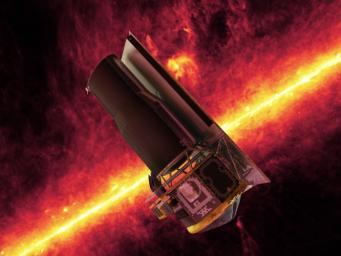
I’m all in favour of interesting astronomical research, but this is really reaching (and from JPL, no less — slow news week before xmas?):
Partial Ingredients for DNA and Protein Found Around StarNASA’s Spitzer Space Telescope has discovered some of life’s most basic ingredients in the dust swirling around a young star. The ingredients — gaseous precursors to DNA and protein — were detected in the star’s terrestrial planet zone, a region where rocky planets such as Earth are thought to be born.
The findings represent the first time that these gases, called acetylene and hydrogen cyanide, have been found in a terrestrial planet zone outside of our own.
Acetylene and prussic acid are “precursors to DNA”? Only in the same sense that sand and copper are precursors to supercomputing cluster. Methinks someone’s reaching for publicity that they haven’t yet earned.
Show me absorbtion lines for a handful of amino acids and I’ll be impressed; show me the same for a protein and I’ll be stunned, but this...?
Let’s rephrase it in geek terms and see how it looks (and bear in mind that a thousand-node supercomputer cluster is the mbodiment of stark simplicity when compared with, say, an escheria coli becterium):
Partial Ingredients for Supercomputer Cluster Found Around StarNASA’s Spitzer Space Telescope has discovered some of computing’s most basic ingredients in the dust swirling around a young star. The ingredients — mineral precursors to chips and wiring — were detected in the star’s terrestrial planet zone, a region where rocky planets such as Earth are thought to be born.
The findings represent the first time that these minerals, called silicon dioxide and copper, have been found in a terrestrial planet zone outside of our own.
Comments